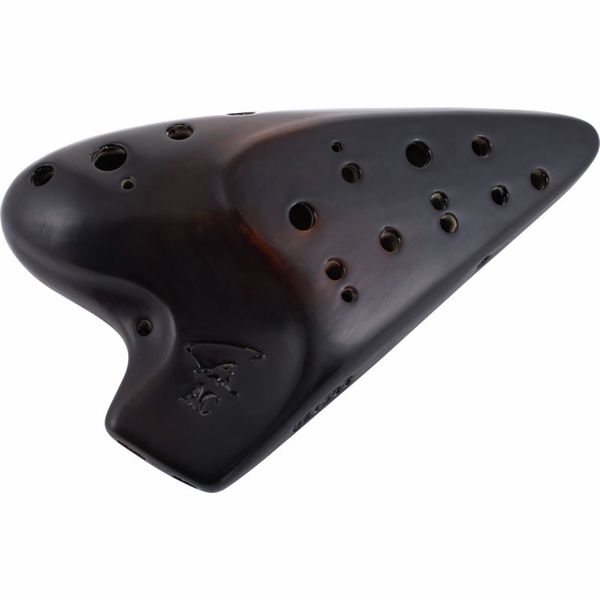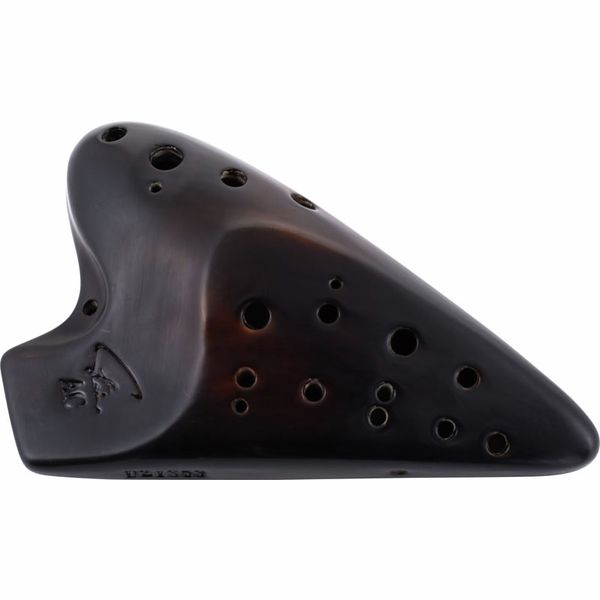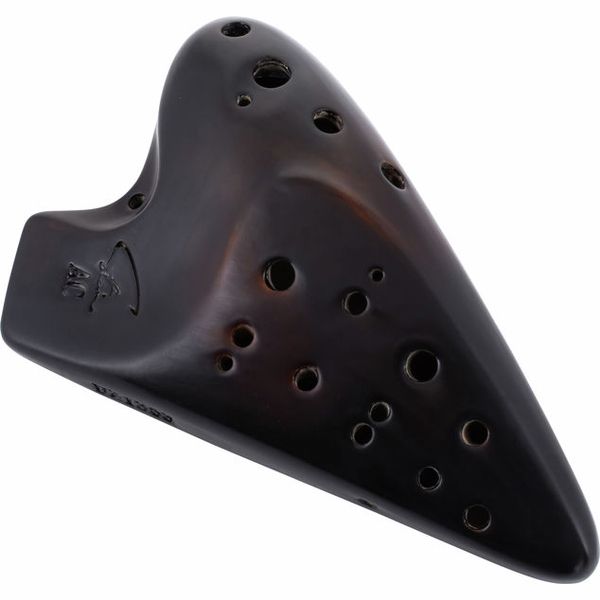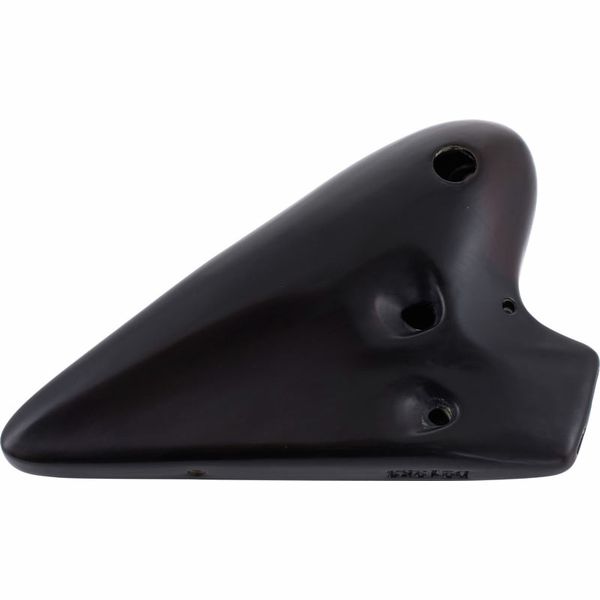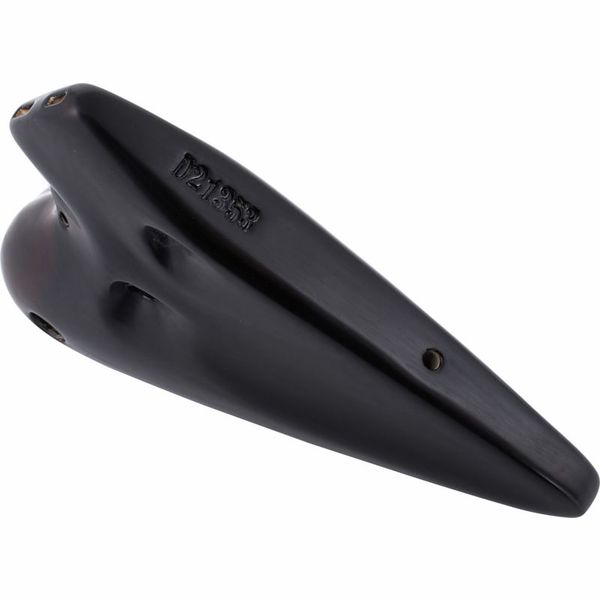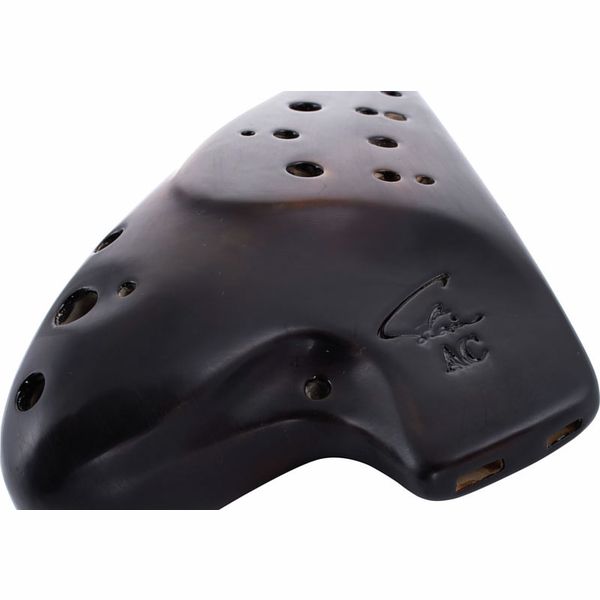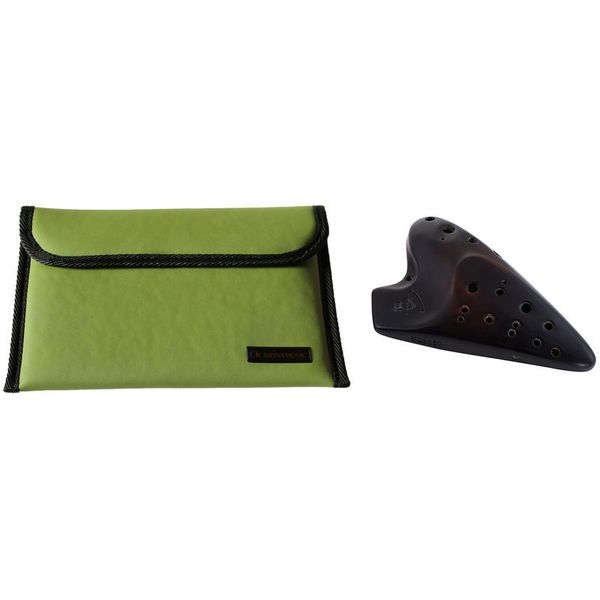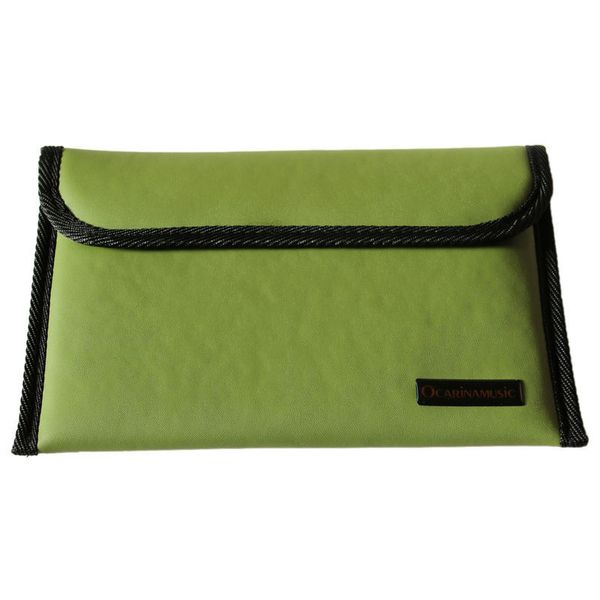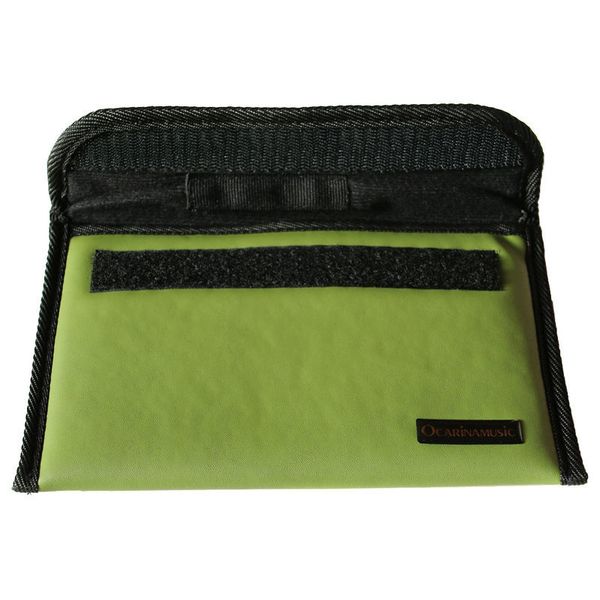This ocarina has a great, clear and beautiful sound. I've played the ocarina for about two years now. I have a little over 10 ocarinas in my collection, 12-holes and multi-chambers alike, and this is my absolute favourite when it comes to the way it sounds.
It's also rather quiet, and requires low breath pressure, as far as ocarinas go, which I find perfect for practice.
What I like a little less about it is the number and position of the holes on the second chamber. I have rather long fingers, and it's a little difficult for me to hold this ocarina while playing the second chamber without having to crook them. I also find it easy to only partially cover one hole or another by mistake on this chamber, because of my fingers' positioning (especially my ring finger, which has to cover two holes, on this model).
On a related note, I find that the highest D, which has a dedicated hole on the rightmost side of the second chamber, is extremely hard to hit. I don't know if that's due to a lack of technique (though it probably is) but nevertheless, there's a tremendous gap between being able to play the rest of the notes correctly, and that one. Just because of a tiny change in breath pressure, it will squeak and turn into any random other note. In fact the D might be the hardest note to hit there. No joke. That hole is anything but stable. For that reason I'm not using it, and I'd rather it not be there at all because all it does, for me at least, is getting in the way.
I don't have any of these issues with my triple ocarina from another brand (but then again that one doesn't sound as good, so I still prefer this Stein/Focalink here).
On a more positive note, there's something I really like about that second chamber, and it's the alternate finger positionings. There are usually at least two ways to play the same note on that chamber, all in tune, which allows for quickly and easily alternating between notes that would otherwise be hard to reach.
Notwithstanding the little shortcomings, which I'm sure can be made up for with enough technique, this is an incredibly good ocarina, definitely worth its price. Highly recommended. It's my absolute favourite to date.


